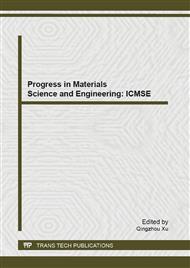p.529
p.535
p.540
p.547
p.552
p.558
p.567
p.574
p.579
The Compatibility of Poly(3-hydroxybutyrate-co-4-hydroxybutyrate) and Thermoplastic Polyurethane Blends
Abstract:
Thermoplastic polyurethane (TPU) has been used to toughen Poly (3-hydroxybutyrate-co-4-hydroxybutyrate) (P34HB) and increase its cold-resistance. The compatibility of P34HB/TPU blends was predicted by solubility parameter, then investigated by appearance and transparence, Dynamic Mechanical Analysis (DMA) and Scanning Electron Microscopy (SEM) analysis. The P34HB/TPU was found to be a partly compatible system. The appearance and transparence of P34HB/TPU blends were smooth and non-transparent. The DMA showed that the glass transition temperature of P34HB was decreased with the increase of TPU content. The SEM photos showed that the morphology of the P34HB/TPU blends were the sea island structure.
Info:
Periodical:
Pages:
552-557
Citation:
Online since:
October 2013
Authors:
Keywords:
Price:
Сopyright:
© 2013 Trans Tech Publications Ltd. All Rights Reserved
Share:
Citation:


